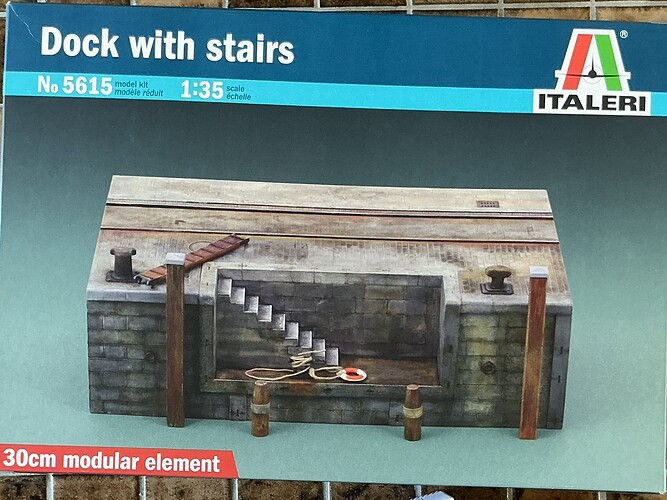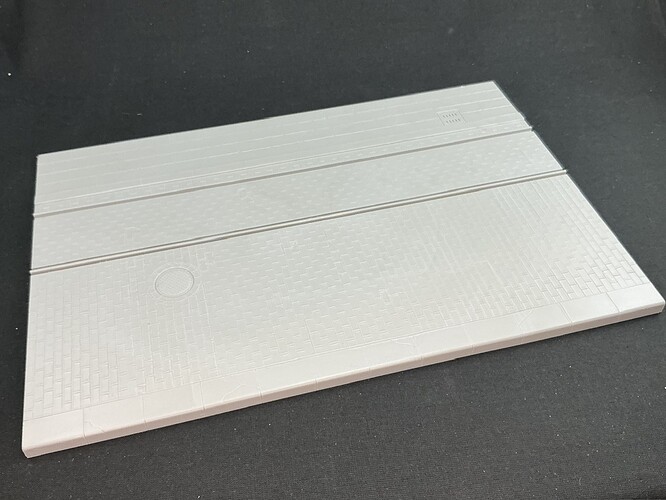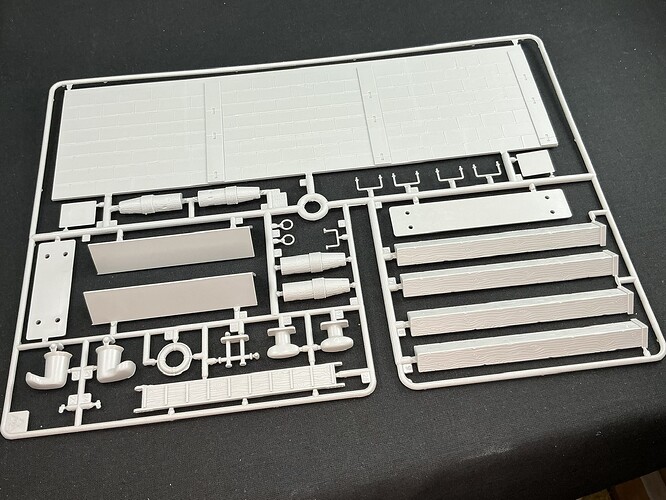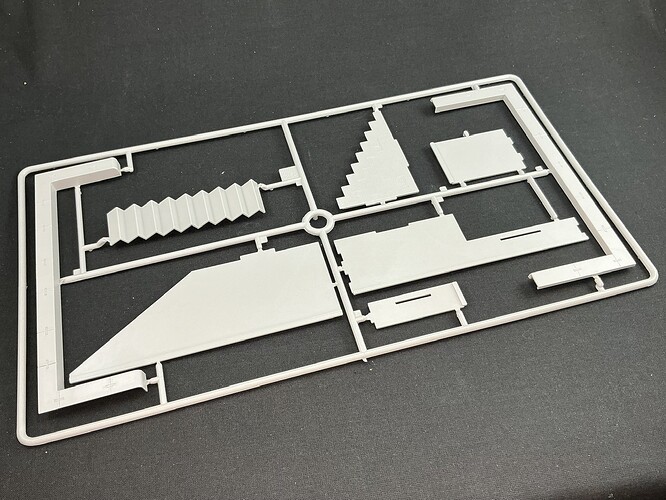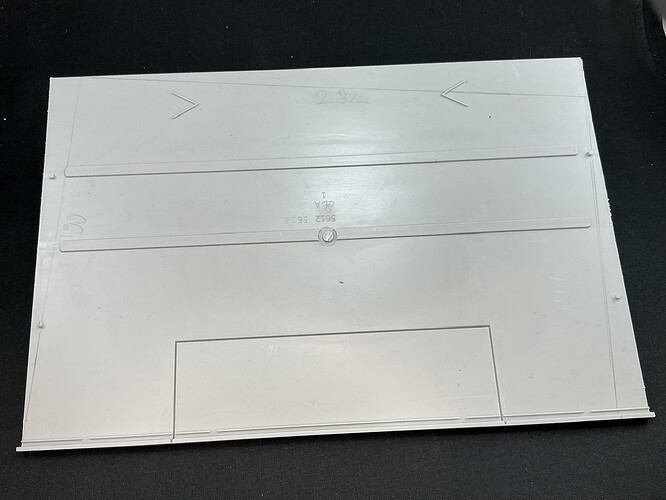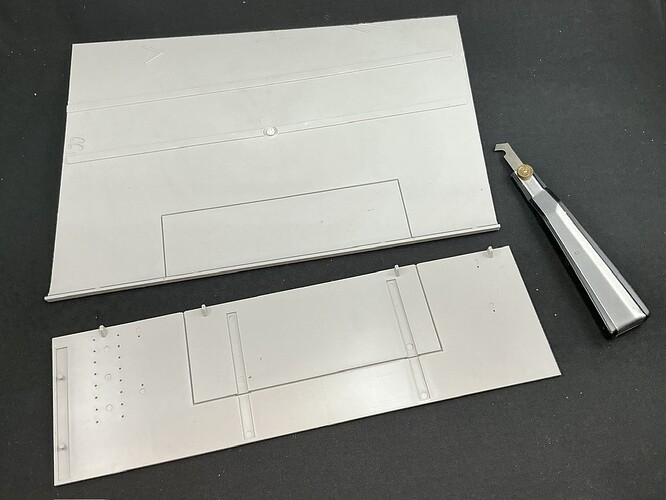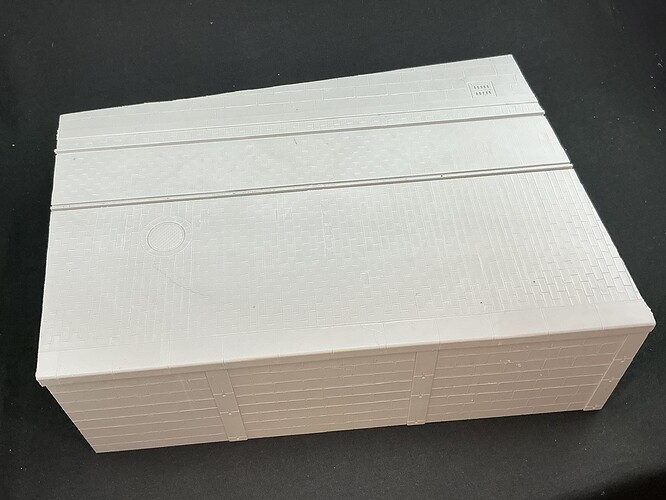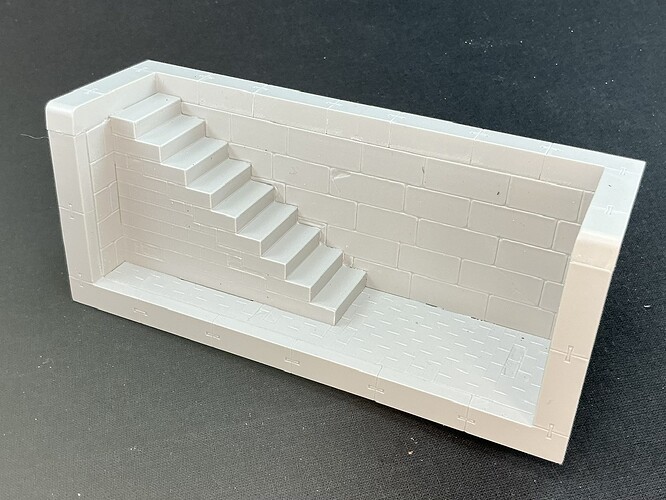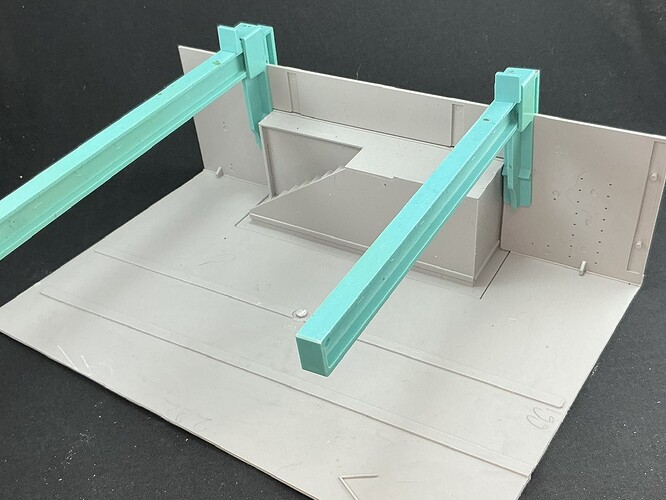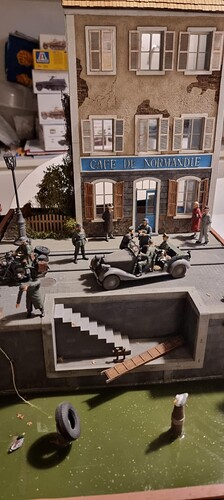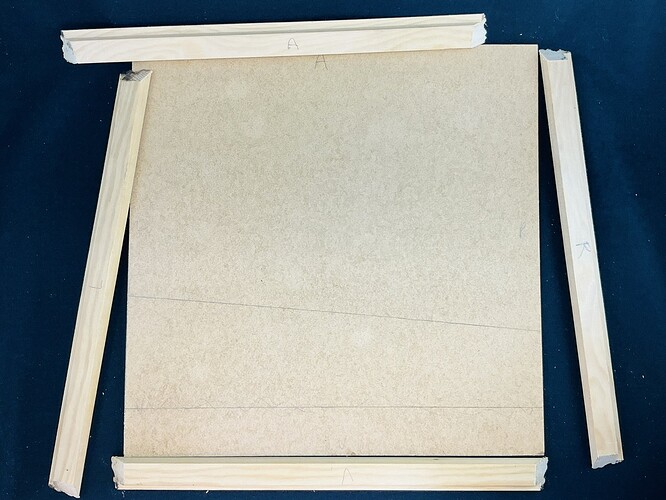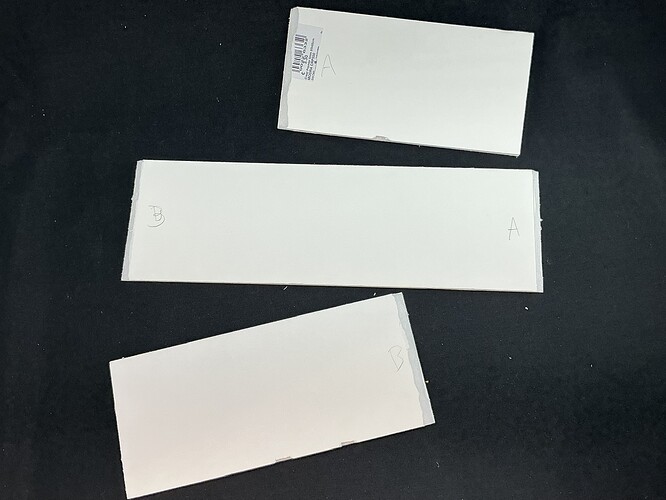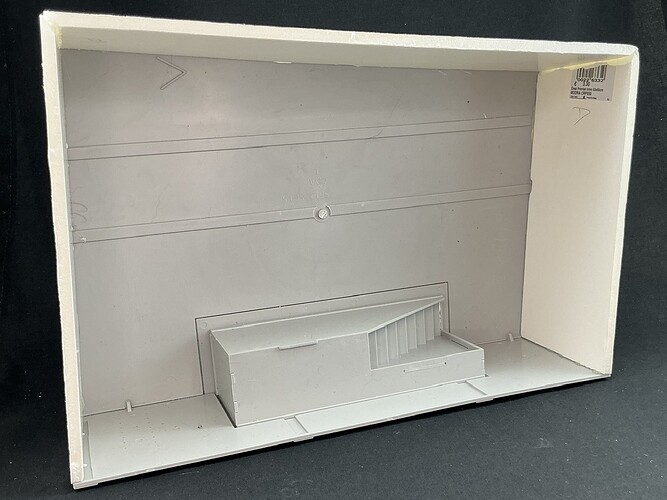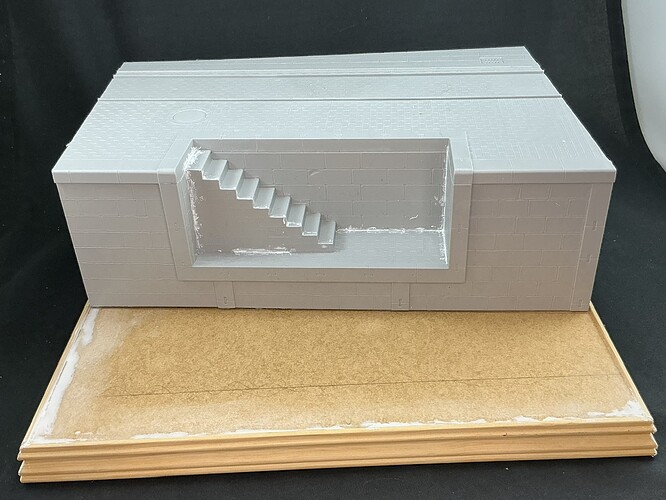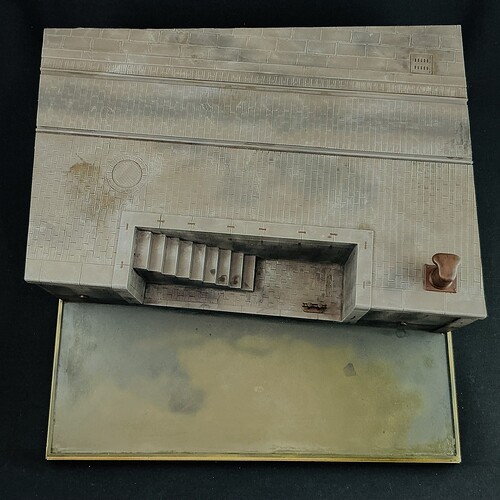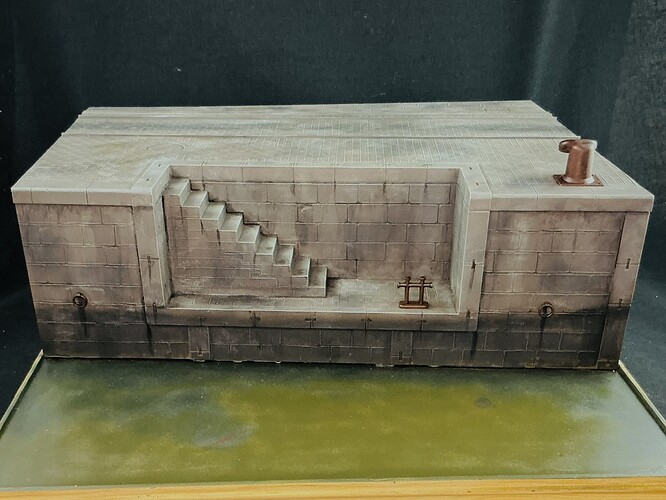Recently, I bought this Italeri set because I felt like building another diorama-without-models, as a base for putting them on and photographing them:
As the box says, it’s 30 cm wide, as well as about 20 cm deep and you can connect multiple elements — Italeri also makes it without the steps, both with a single element and as a set of two. In the box is this:
There’s also a bit of string, which I didn’t include in the photos. The last sprue, of course, is only in the set with the steps, but the parts for the quay itself are exactly the same in all sets, because:—
… the inside has lines for cutting out the opening for the steps.
Oddly, perhaps, there are no walls for the rear and sides, only two measly pillars with an L-profile that support the back of the top plate. I’m going to glue the whole to a base plate and so will add those sides to neatly enclose everything. Only thing is that a diorama doesn’t look so good when major lines run parallel to the base’s edges, so I began by drawing some lines to work out how to cut up the top plate:
It’s only a few degrees’ difference, but that will already make it look better. Important, though, is that the corners between the pencilled lines are 90° (assuming you want to use a rectangular base, of course). I pencilled in the dimensions too, so I won’t need to keep measuring them because I forget ![]() Then all that remained was to cut it with a Tamiya plastic cutter:
Then all that remained was to cut it with a Tamiya plastic cutter:
You don’t need to go all the way through, about halfway is enough, after that you can wiggle it up and down with some pliers until it snaps off. The plastic is about 2 mm thick and fairly hard, so this is more of an effort than it would be with regular plastic card. That done, I naturally also shortened the wall to match. What I only realised after the first cut is that I should have removed the raised bits, like the V shape that the pillar is supposed to be glued against, because they get in the way a lot when cutting.
And assembled for the picture:
Then I built the steps:
It still needs some seams puttied before I go on, though.
